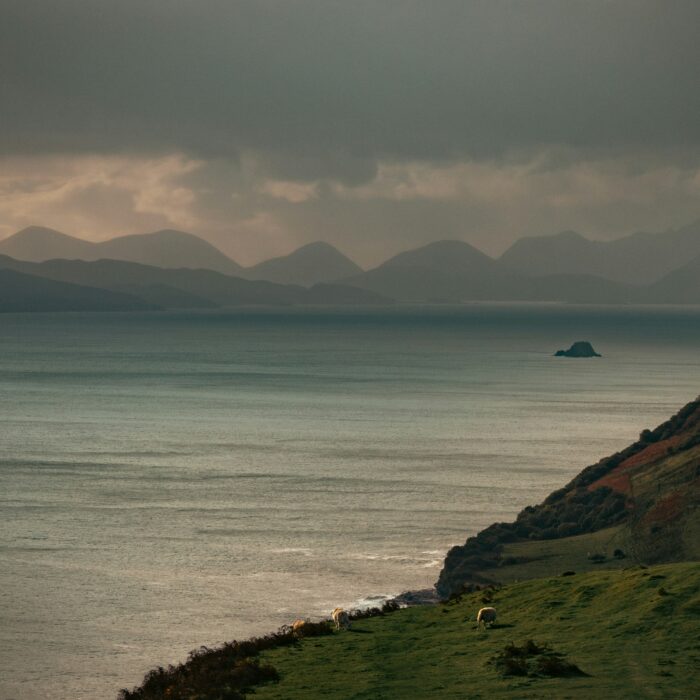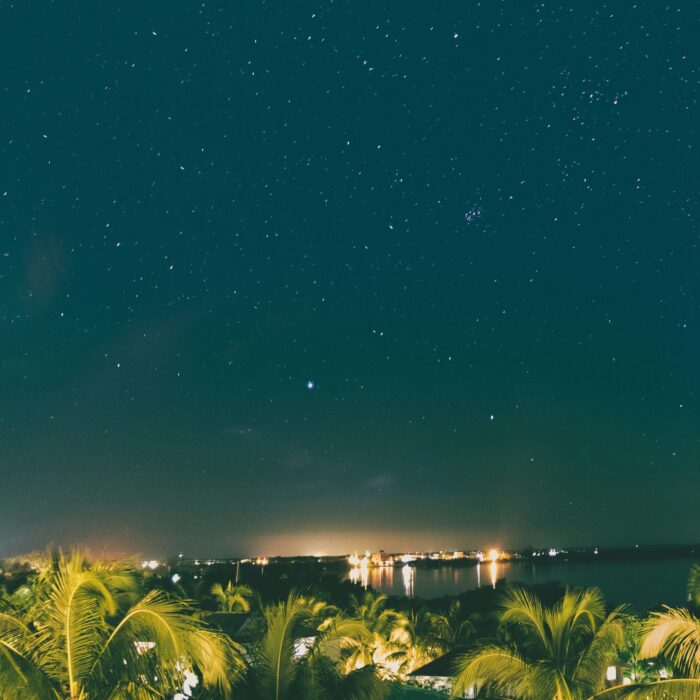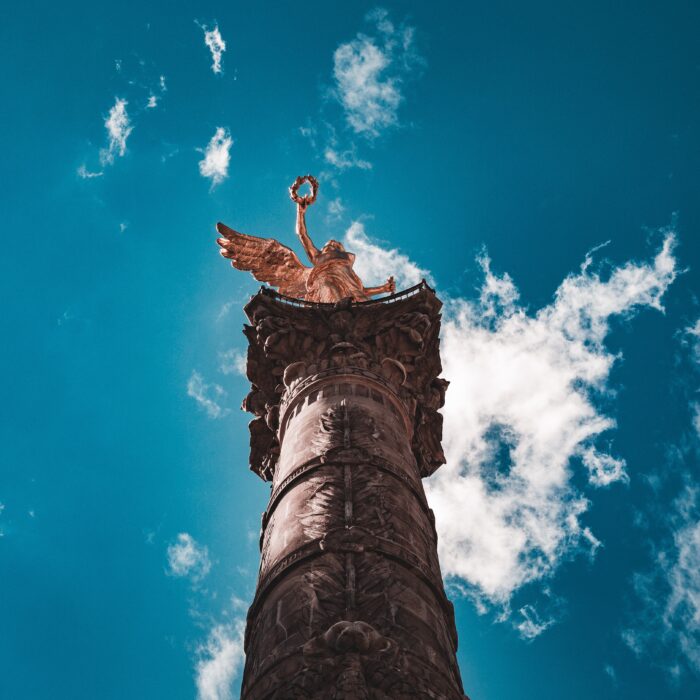You have no items in your cart. Want to get some nice things?
Go shopping
He had warned us. This wouldn’t be your travel agent’s Mexico, no rent-a-moped-and-go-out-for-margaritas vacation. This would be diesel-town, country-poor and don’t-drink-the-water. And I’d better brush up on my Spanish; most signs would warn “no se habla englais.”
Bob—our wiry, red-headed, internationally-known birding expert friend—wanted Rich and me to join him in rural northeastern Mexico for the 1991 El Naranjo Audubon Christmas Count. Plus, he reasoned, it made sense to spend another week on the west coast, between the old-time-Mexico towns of Mazatlan and San Blas, with an excursion into the Sierra Madre Mountains along the infamous Durango Highway.
Rich and I were veterans of Christmas Counts—the annual world-wide event that turns birders into citizen-scientists, documenting the quantity and variety of birds seen in a given area.
And we had heard about the Durango Highway, Mexico route 40, at that time one of only two paved east-west roads crossing the country. It was a dangerous place. Not just the ten thousand-foot elevation, treacherous two-lanes with hairpin turns, canyon-like drop-offs, and lack of guardrails. Or the rockslides, washouts, fog and occasional ice. This was the ‘outback’ of Mexico—the land of Pancho Villa—a remote backcountry, inhospitable and lawless. Even by 1990, birders had been robbed at gunpoint for their high-priced optics, and a thriving drug trade in the isolated mountains fueled grisly murders by rival fledgling drug cartels. Some books called the road El Camino de Tres Mil Curvas, the Road of 3,000 Curves. Others referred to it more darkly as El Espinazo del Diablo, the Devil’s Backbone. Author Richard Grant would later name the region “God’s Middle Finger” and the State Department would eventually recommend “to defer all non-essential travel to the area.”
In contrast, we knew the highway held some of the most breathtaking scenery in the country, cutting across the spine of the Sierra Madres where rivers have carved deep valleys and dramatic canyons through volcanic rock, and the serrated ridges of the deeply-forested mountain range drift hundreds of miles to a hazy blue horizon.
But most importantly, the Durango Highway had become renowned in birding circles; it was home to an abundance of birds, many found nowhere else in the world.
Rich and I compared the pros to the cons and decided: we had to go.
The whole idea was crazy enough to appeal to another friend, Brian, a soft-spoken guy who, with his long hair and wire-rimmed glasses, looks like a gentle throwback to the ‘60s. It didn’t take much convincing; he was in.
January 2, 1991: The second week of our Mexican adventure. Perched atop the roof of an old mountain guesthouse, the three guys and I were enjoying our cervezas and the last balmy breeze of a t-shirt-weather day. We had an unobstructed view—down dusty foothills, across a rolling plain, due west about 50 miles to the Pacific—to the sun setting over the sprawling city of Mazatlan, the jumping-off point for the old Durango Highway.
Halfway up the highway’s first mountain, at about 4000 feet, we were settled into Villa Blanca—comfortable, accommodating, owned by a German couple who filled it with ferns and knickknacks and encouraged us, as the only guests, to climb out the third-floor window for sunset-watching from the roof.
I leaned back on the worn, brown, sun-warmed shingles, taking a more comfortable approach to roof-sitting than my travel companions now straddling the peak.
“Why don’t you sit up here?” one of them called down to me.
“No way,” I said, laughing.
My ‘condition’ had become the butt of the day’s jokes—literally—since a small lapse in judgment two days prior made it uncomfortable to sit. On ‘count day’ in El Naranjo we were afield before dawn. By late morning it was time to pee, but hiking an old forest horse trail, we were miles from any facilities. Not thinking clearly, I struck off deep into the brush, eager for privacy and not minding that the flannel-lined jacket tied around my waist was resting against the bushes where I squatted. That night, as I leaned over the old hotel’s claw-foot bathtub, my husband, with tweezer in hand and all the love he could muster, had pulled 38 tiny ticks from my behind.
Evening settled around the rooftop and I reached for my now tick-free jacket. A pair of nighthawks swooped low over the pines in front of us. Talk turned to the previous week’s count where we had logged 177 species of birds.
“How many of those were life birds?” asked Bob, referring to the special list most birders keep of all the birds they have seen in a lifetime.
“Sixteen for us,” Rich said holding a thumbs-up like a dark silhouette against the sky. We had birded extensively in the Yucatan two years earlier; many of the El Naranjo birds were already on our life list.
“Double that for me,” said Brian, who had never been to Mexico.
Bob, who had seen most of the Mexican birds, wasn’t expecting any life birds, but we knew he would be thrilled by anything unusual in the days to come, especially the endemics—the birds unique to a particular place.
“You might get as many as ten new ones tomorrow,” said Bob, “but we’ll concentrate on three targets: two jays and a hummingbird.”
The Mexican jays might be even more beautiful than their North American cousins. The exotic tufted jay is found only in Mexico’s western mountains. The other endemic jay, the black-throated magpie-jay, is two and a half feet long; his tail alone is longer than a crow. The hummingbird in question, the bumblebee, at 2.8 inches, is one of the smallest birds in the world.
I pulled my jacket tight over my chest and shivered, the shingles against my back suddenly free of their solar properties. I wondered about the upcoming adventure. What would it be like to cross the devil’s backbone? Already we had endured one robbery in Mazatlan; someone had slid open the trunk of the rental car and made off with Brian’s backpack and our telescope. Did that event presage our foray into wilder areas?
We were out before dawn in the bracing mountain air, deep-breathing the earthy smells of the forest. As we squeezed into our smaller-than-compact car, one lone nighthawk glided through the pale light of the parking lot. Rich, sharing driving duties with Bob, climbed into the driver’s seat, and Bob, as navigator, took the passenger’s side. Brian and I settled into the back, the foil-wrapped package of breakfast tortillas between us, warm against my leg, as the car filled with the savory aroma of hot scrambled eggs and pungent chilies.
The quest was on.
The road ascended immediately and driving was slow, winding through the dark oak and pine forest. At each bend toward east we spotted another pastel layer of daybreak, then a sharp curve plunged us again into dim shadows. Grateful that Brian had the drop-off side, I steeled myself against the twists and turns, focusing out the front window on the thin mist hanging over the distant peaks.
We found our first stop, a pull-off for a sign marking the Tropic of Cancer. But there was nothing tropical about the morning. Huddled in small patches of sunlight, hopping from foot to foot for warmth, we strained our ears to distinguish specific calls through the din of birdsong—the scream of parrots, the constant trill of towhees, the plaintive notes of the flycatchers.
Suddenly, in the distance, a raucous squawking alerted us that jays were on the move. Flying in boisterous noisy packs, called a party, they streak through an area—you need to be quick to get a good look at one. We stared through the woodland toward the invisible ruckus. I raised my binoculars, alert for any movement.
“Here they come,” Rich whispered and pointed toward some dense vegetation about 50 yards away. I spied something—just a blur—an indistinct flapping of wings and rustle of foliage. Then the whole party burst into view: at least a dozen tufted jays. One broke off from the pack and, with a loud raaaaaak, flew directly toward us. I caught him in my binoculars, fiddled frantically with the focus, and gasped. He was stunning. Intensely black, white and deep rich blue. A shock of feathers splayed like a mohawk along his head. He shot past my face, close enough for me to glimpse his vivid yellow eye.
Three of us let out a “whoop!” while Bob smiled, scratched a checkmark in his pocket-sized notebook and said, “Success number one.”
We drove higher in elevation. Every now and then, a break in the forest revealed a vast canyon, wider than a city block, the walls of its far side glowing brick red in the sun. At one opening Rich spotted a pull-off, barely large enough for us to step out timidly and peer over the edge to the rushing stream below. As if on cue, a small party of jays squawked into view. Huge as hawks, these were sleek and blue with black plumes sweeping back from a crest on their heads, and as they spread their wings and tails they floated across the valley like parachutes. We watched in silence as our second target bird disappeared across the distant ridge.
Back in the car, we zigzagged again up the mountain, adrenaline pumping, confident in the luck of the day. More hairpin turns taunted us to choose: look down into the barrancas (the steep-walled ravines) or across the rugged vistas to the jagged peaks against the sky. Finally, the wooded areas thinned into meadows. More people walked the roadsides here, bent and burdened. We passed a couple of dilapidated shacks, a few campesinos hunched over their land, scratching a living from the rocky soil.
“This is the place,” said Bob, signaling Rich to pull into a small parking area.
In the distance, up the slope, the hillside was undulating, waving like a breeze over wheat fields. We slowed to a creep. The waves became colors—brilliant blues and greens, and shimmering black. The movement was birds. Hummingbirds. Hundreds of them.
Standing at the side of the road, scanning the hillside, we could see every size and color of hummingbird. Chunky green violet-ears, glittering fork-tailed emeralds, star-throats with ruby blaze and bills as long as their bodies, and magnificent hummingbirds—purplish black and twice the size of the others. Each flower seemed to have its own, hovering, zipping into the air above or across the field and back. Some trilled like insects, others buzzed like band-saws as they whizzed up and down, back and forth in a manic flight pattern through the fragrant wildflowers.
“Bumblebee!” Bob shouted, and instantly we all spotted it. There, above a gaudy pink flower, it floated, no larger than an insect—a perfect miniature hummingbird. The tiniest bird we had ever seen.
A shiver of excitement surged through me, a rush of pure delight to witness that exquisite bird. I glanced at my companions, three grown men grinning like kids. We lingered—the sun warm, the buzz of the hillside mesmerizing, the thrill of the morning settling into contentment.
For the rest of the day we hiked at higher elevations through the heady scent of pine. The sun was warm; birds were everywhere. In contrast to the previous week, often running into fellow birders, we shared the wide paths with no one, our footsteps muffled by the thick forest floor. We identified Mexican species, new for the trip, plus dozens of North American migrants that depend on the Mexican forests for survival. Like us, they might have spent their summer in Virginia but now were relishing this equatorial winter. By late afternoon, exhausted and elated, we decided to head back to Villa Blanca. Bob, always open to a chance for a few more birds, suggested one last detour up a small gravel back road that runs to the village of La Pateca.
The road was a washboard; we thumped along, a billowing cloud of dust stretching behind us, the shimmer of heat haze ahead. Almost to the village, we conceded that we might be done for the day. Time to turn around and head back down the hill.
Suddenly, around a bend in a switchback, two beat-up jeeps and a flatbed truck blocked the road. The jeeps were crammed with men. Another dozen leaned out over the long rickety sides of the truck. They all looked like the locals we’d seen along the road. Except they were armed with submachine guns.
Rich skidded the car to a halt. I grabbed Brian’s arm. We stared ahead.
No one spoke. My heart pounded in my ears.
A stocky, bearded man jumped from the first jeep. His gun flopped around his neck as he stomped toward us in heavy black boots, caked with clay. Rich rolled down his window and, under his breath, said, “Get ready, Cin. You’re on.”
I squirmed in my seat, my tick bites suddenly prickling, my mind suddenly blank. Brian shot me a quick glance. Shit. As designated Spanish-speaker, I had to explain to this guy what we were doing there.
He reached the car. His dark blue shirt and trousers were stained and ragged. He could have been a soldier or bandito—his weapon was formidable.
Gesturing with his gun, the man barked a few indistinguishable words. Rich cracked his door, leaning to get out. With a shout and a shove of one elbow, the man slammed the door. The other arm held the gun steady, pointed toward the open window. Right at my husband’s head.
“Wait!” I shrieked, desperately rolling down my window. The gun barrel swung toward the back seat. I couldn’t see the top of the man’s head, only a couple of yellow-stained teeth as two black, cracked lips curled into a sneer.
I pointed to my binoculars. “We are birdwatchers. We mean no harm,” I said to the gun, except I said it in English, and in that loud, halting voice people use when they think the other person doesn’t understand or can’t hear them. Or both.
Silence. I felt the cold sting of a tear on my cheek.
“Come on, Cin, say something!” Rich whispered.
“Aves,” I blurted out, finally remembering the word for bird. I cocked my head toward his face. “Aves,” I repeated.
The man glared. Squinted. Sized us up. Then slowly backed away. The moment hung in the air, no one breathing.
He swung the gun right to left, low across his chest. “He wants you to go,” Bob whispered. The man swung the gun again.
“Okay,” Rich muttered, “here goes.”
He shoved the gearshift into drive and slowly inched forward. No reaction.
We inched again. The man continued to scowl.
We eased through the narrow gap between the ditch and the flatbed. Past the men lined up along the long sideboard. Their dark eyes trained on us, their guns followed the movement of our car. Some were just kids, waiting to shoot. At the back end of the truck Rich paused.
“Drive like hell!” yelled Bob.
And we did. Down the hill, slumped in our seats, terrified the desperados might decide to pursue. Even Rich hunkered down, trying at the same time to keep the car from spinning out on the gravel turns. All the way to the bottom of the hill we skidded, until Rich pulled to the side of the road and turned off the engine.
“Holy shit,” he said. We all nodded.
We sat in the stunned silence for a few minutes, hearts pounding.
Finally, Bob gestured toward the main road. “Let’s get out of here. Before they change their minds.”
As we drove on to Villa Blanca, we hashed and re-hashed the event, the terror gradually subsiding, replaced by a survivor’s giddiness.
“Maybe they were vigilantes,” Brian said, “and we looked suspicious.”
“Maybe somebody screwed somebody’s wife,” Rich added.
We suggested more scenarios, but the question lingered: what the hell just happened?
Back at the inn we grabbed Tecates from the cooler and climbed shakily onto the roof.
The sun was dropping toward the horizon, and suddenly, for just an instant, the sky around it flashed green. Then darkness settled around us and, in place of the setting sun, the city of Mazatlan was a thin string of lights in the distance.
“To the Durango Highway,” said Brian, raising his bottle.
I felt the relief of the icy bitter liquid drenching my mouth. I shivered, biting back the swirl of emotions rushing up from my gut. Dread of the desperadoes, anger that we had put our lives in danger, shock that we had survived, gratitude to be alive in this now-tranquil setting.
Rich put his arm around me. “To ticks,” he whispered with a chuckle, clinking my bottle.
“To birds,” said Bob.
“To life birds,” we all echoed.
“To life,” I whispered, swallowing back some tears.

Cindy Carlson
Cindy Carlson grew up in the snowbelt region of western New York and, when not traveling and birding with her husband, has spent most of her adult life along the Chesapeake Bay in Virginia. After a long career in youth development, where she published in numerous professional journals, she spends her retirement with creative nonfiction. Her work has appeared in Birding, The Quotable and damselfly press.




